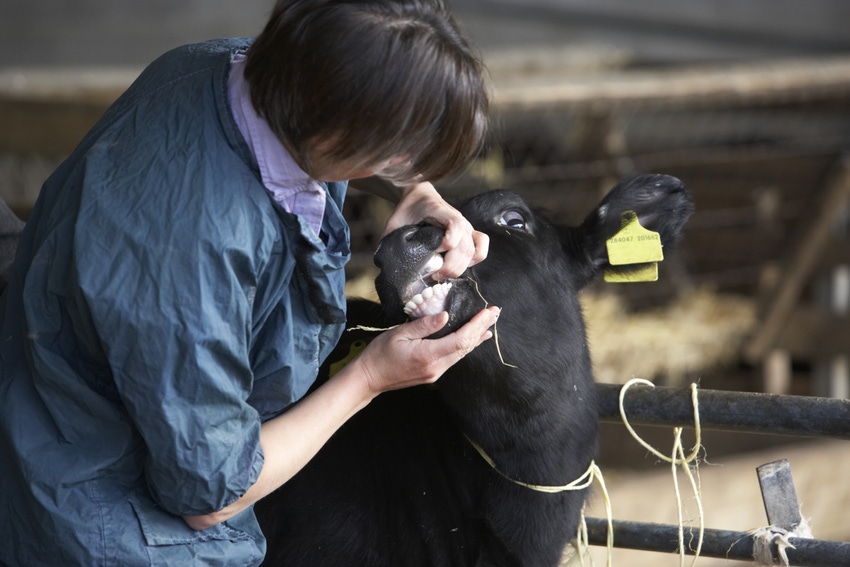South Dakota State, University of Minnesota working on collaborative program in rural veterinary medical education.
December 7, 2018

South Dakota State University (SDSU) and University of Minnesota faculty and administrators will be planning for a new collaborative program in rural veterinary medical education, following discussion of a report Dec. 5 by the South Dakota Board of Regents during its meetings in Aberdeen, S.D.
Students in this program, which is often called a 2+2 option, would complete the first two years of courses at South Dakota State and the final two years at the University of Minnesota’s College of Veterinary Medicine in St. Paul, Minn. The first 20-student cohort would start classes at Brookings, S.D., in August 2021, according to the report reviewed by the regents.
The report, prepared by faculty and administrators at both universities, builds the case for a program that addresses a shortage of veterinarians, create additional opportunities for South Dakota students to pursue veterinary careers, supports a growing agriculture industry in the region and addresses the concern of student debt in veterinary education.
“This collaborative program makes sense for students, for the agricultural industry across South Dakota and Minnesota, and for both universities,” said Dennis Hedge, SDSU provost and vice president for academic affairs. “Most notably, faculty and administrators have created a financial model that reduces the costs of education for veterinary medicine students, many of whom pay full out-of-state tuition rates and fees to complete their doctoral degrees at accredited veterinary colleges.”
Dustin Oedekoven, the South Dakota state veterinarian, has participated in informational meetings on the proposed collaborative program. He said he sees several positive attributes of the proposal, starting with the benefits for current and future veterinarians.
“This program will offer South Dakota students an opportunity to achieve a professional doctorate degree in veterinary medicine while keeping their educational costs at in-state tuition levels and reducing dependence on loans,” Oedekoven said. “It will emphasize the expertise of South Dakota’s rural veterinarians and will foster natural connections between veterinary students and practitioners that may lead to employment and business partnerships. This concept makes sense for South Dakota, for Minnesota and for the greater region.”
The South Dakota Veterinary Medical Assn. at its annual meeting in August unanimously approved a resolution supporting a collaborative program in veterinary medical education at SDSU.
This program is similar to other 2+2 partnerships between the University of Nebraska and Iowa State University, Utah State University and Washington State University, and University of Alaska-Fairbanks and Colorado State University. However, the SDSU-University of Minnesota collaboration emphasizes mixed animals and rural veterinary medicine, the announcement said.
“This is about serving our state’s needs for veterinary care,” said Dr. Trevor Ames, dean and professor of the University of Minnesota College of Veterinary Medicine. “Our western neighbors feel the shortage of veterinary care even more acutely. This is a good partnership for our schools.”
“Land-grant universities serve states and regions through academic programs, research and outreach, and this professional degree certainly addresses the need for more veterinarians in South Dakota and adjoining states, particularly those who work with food animals,” said John Killefer, the South Dakota Corn Utilization Council endowed dean of the SDSU College of Agriculture, Food & Environmental Sciences. “As dean, I look forward to working with faculty at both universities to implement a veterinary medicine curriculum that will complement several existing programs and research strengths within the College of Agriculture, Food & Environmental Sciences.”
Students could receive a specialization in biological sciences at the master’s degree level from SDSU. Students admitted to veterinary medicine programs usually have completed or are completing baccalaureate degrees in animal science, biology or related fields.
More than three-quarters of students in the fall 2017 SDSU pre-veterinary course completed a survey on their initial interests in a veterinary program that would start on the SDSU campus and finish at Minnesota. Among those still considering veterinary school, 82.6% (or 38 of 46) answered “yes” when asked if they have interest in this 2+2 option, SDSU said.
While a majority of the students in the program will likely be SDSU graduates, students from other universities will also be eligible to apply, the university said.
You May Also Like



